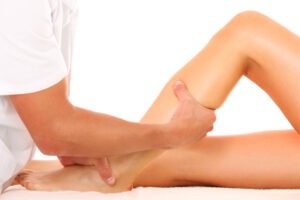 Persistent hip pain may interfere with daily life in a major way, making it hard to remain seated, standing, or go about your usual routine. This pain can stop one from engaging in physical activities or other life choices they enjoy. Hip replacement surgery can be highly effective for someone who has to deal with this kind of pain. During your consultation, your orthopedic surgeon will perform a physical examination and determine whether you are a candidate for hip replacement surgery. Thomas & Bigler Knee & Shoulder Institute, led by established board certified orthopedic surgeons Dr. Steven C. Thomas and Dr. Gregory T. Bigler provides hip replacement surgery to patients in Las Vegas, Nevada as well as greater Pahrump, Bullhead City, Lake Havasu, and Mesquite, NV.
Persistent hip pain may interfere with daily life in a major way, making it hard to remain seated, standing, or go about your usual routine. This pain can stop one from engaging in physical activities or other life choices they enjoy. Hip replacement surgery can be highly effective for someone who has to deal with this kind of pain. During your consultation, your orthopedic surgeon will perform a physical examination and determine whether you are a candidate for hip replacement surgery. Thomas & Bigler Knee & Shoulder Institute, led by established board certified orthopedic surgeons Dr. Steven C. Thomas and Dr. Gregory T. Bigler provides hip replacement surgery to patients in Las Vegas, Nevada as well as greater Pahrump, Bullhead City, Lake Havasu, and Mesquite, NV.
What Is Hip Replacement Surgery?
Hip replacement surgery is a procedure that is done for those who are suffering from extensive damage to their hip cartilage and bone. During the operation, portions of the hip joint are taken away and replaced with prosthetic parts. With a successful procedure, the hip’s mobility and function will be returned, as well as the alleviation of any discomfort.
Who is a Good Candidate for Hip Replacement Surgery?
Hip replacement surgery is most often carried out on individuals between the ages of 50 and 80, and can be done at any age if it is deemed medically essential. This type of operation is beneficial for individuals who experience hip discomfort that does not get better through taking medication, doing physical therapy, or exercising. People who suffer from arthritis had an injury, or have long-term issues with hip pain may also be suitable for the surgery. During your consultation with your surgeon, they will assist you in determining if surgery is the ideal choice.
Hip Replacement Benefits
Opting for a hip replacement can help you return to an active life and relish the activities you love. With successful surgery, you will be able to move around without discomfort and experience relief from pain. Thomas & Bigler Knee & Shoulder Institute, led by established board certified orthopedic surgeons Dr. Steven C. Thomas and Dr. Gregory T. Bigler provides hip replacement surgery to patients in Las Vegas, Nevada as well as greater Pahrump, Bullhead City, Lake Havasu, and Mesquite, NV.
Contact Board Certified Surgeons Dr. Bigler or Dr. Thomas at the Knee and Shoulder Institute in Las Vegas, NV to Schedule an Appointment:
If you would like to schedule an appointment or learn more about the Knee and Shoulder Institute procedures & treatments performed by Las Vegas, Nevada board-certified surgeons Steven C. Thomas, MD and Gregory T. Bigler, MD. Contact the office today click here.
Serving patients from and around greater Las Vegas, Lake Havasu, Bullhead City, Mesquite, Pahrump, Nevada


 The knee is one of the most important joints required for mobility, however, can quickly become stiff and painful when arthritis occurs.
The knee is one of the most important joints required for mobility, however, can quickly become stiff and painful when arthritis occurs. 
 After suffering a shoulder injury, one may need surgical intervention to the
After suffering a shoulder injury, one may need surgical intervention to the  One of the most common injuries to the knee is a torn meniscus.
One of the most common injuries to the knee is a torn meniscus. 
 ACL and MCL tear are both seriously debilitating
ACL and MCL tear are both seriously debilitating